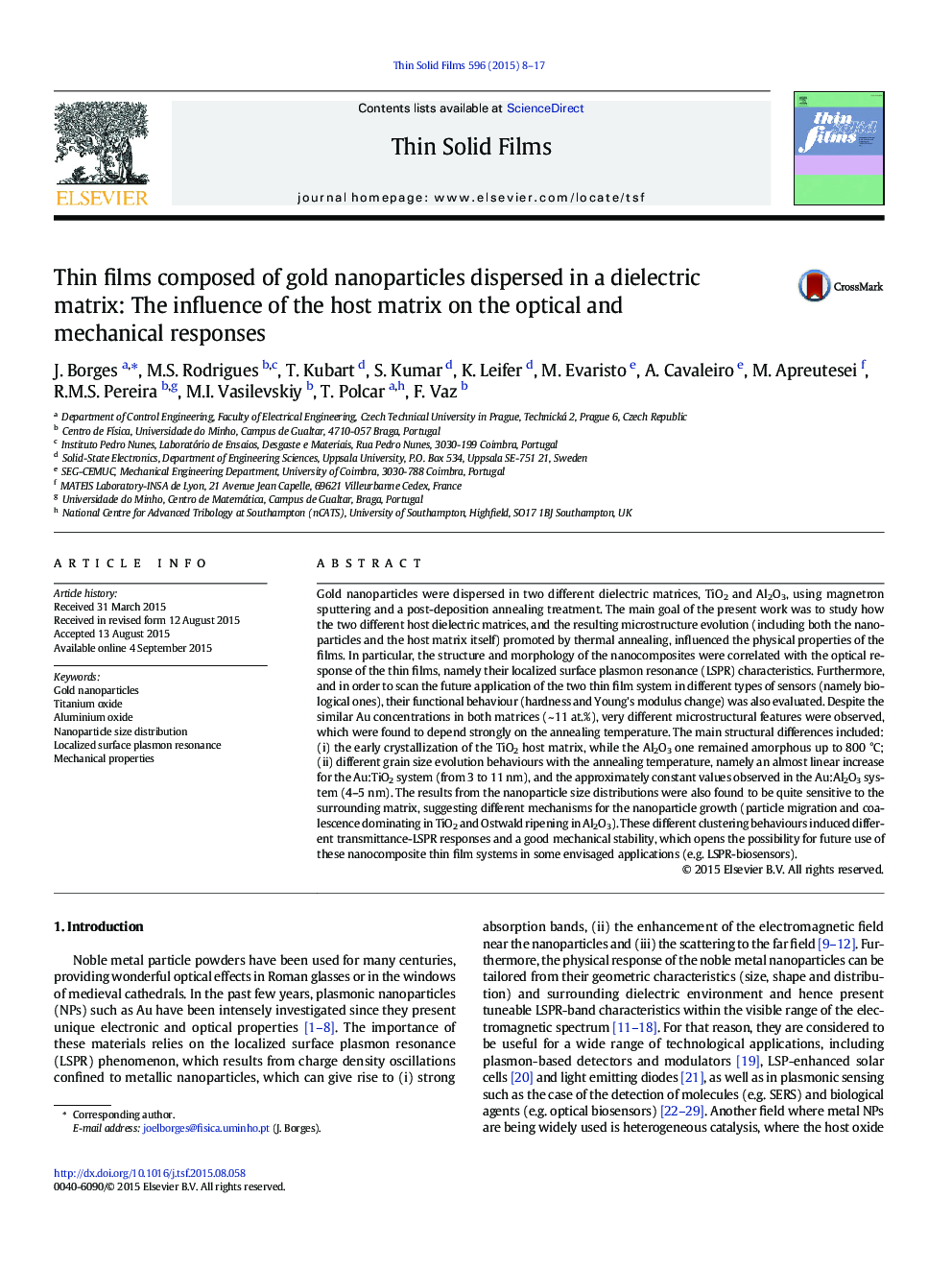| Article ID | Journal | Published Year | Pages | File Type |
|---|---|---|---|---|
| 1664496 | Thin Solid Films | 2015 | 10 Pages |
•Gold nanoparticles were dispersed in titanium and aluminium oxide matrices.•The gold nanoparticle size distribution depends on the host matrix.•The host matrix influences the localized surface plasmon resonance bands.•Thermal annealing induces optical and mechanical changes in the films.
Gold nanoparticles were dispersed in two different dielectric matrices, TiO2 and Al2O3, using magnetron sputtering and a post-deposition annealing treatment. The main goal of the present work was to study how the two different host dielectric matrices, and the resulting microstructure evolution (including both the nanoparticles and the host matrix itself) promoted by thermal annealing, influenced the physical properties of the films. In particular, the structure and morphology of the nanocomposites were correlated with the optical response of the thin films, namely their localized surface plasmon resonance (LSPR) characteristics. Furthermore, and in order to scan the future application of the two thin film system in different types of sensors (namely biological ones), their functional behaviour (hardness and Young's modulus change) was also evaluated. Despite the similar Au concentrations in both matrices (~ 11 at.%), very different microstructural features were observed, which were found to depend strongly on the annealing temperature. The main structural differences included: (i) the early crystallization of the TiO2 host matrix, while the Al2O3 one remained amorphous up to 800 °C; (ii) different grain size evolution behaviours with the annealing temperature, namely an almost linear increase for the Au:TiO2 system (from 3 to 11 nm), and the approximately constant values observed in the Au:Al2O3 system (4–5 nm). The results from the nanoparticle size distributions were also found to be quite sensitive to the surrounding matrix, suggesting different mechanisms for the nanoparticle growth (particle migration and coalescence dominating in TiO2 and Ostwald ripening in Al2O3). These different clustering behaviours induced different transmittance-LSPR responses and a good mechanical stability, which opens the possibility for future use of these nanocomposite thin film systems in some envisaged applications (e.g. LSPR-biosensors).
